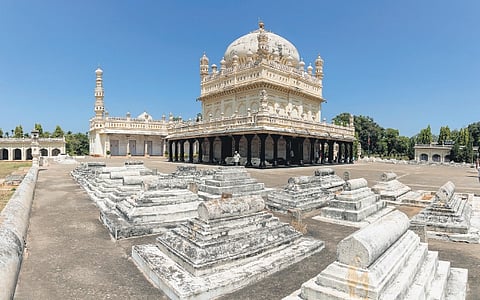

BENGALURU: Most visitors to Mysuru go to the palace, to Chamundi Hills, and then maybe the Brindavan Gardens. But for everything else in the city, they have little interest or time. And they might not even know should they have the interest,” says George Michell, writer-archaeologist and co-author of Mysuru Srirangapatna, (Jaico Publishing House; Rs 599), a new guidebook by the Deccan Heritage Foundation that aims to fill a knowledge gap about the two historical places of enormous importance.
“Mysuru and Srirangaptna are places of enormous historical interest with an architectural legacy, which has not been adequately served by the literature available to people today. And considering how many people visit Mysuru and Srirangapatna, the enormous footfall means that to get a proper professional guide is almost impossible. So this book is an opportunity to fill that gap,” Michell adds.
Co-authored by Malavika Murthy – a conservation architect, Caleb Simmons – faculty director of the Interdisciplinary Studies Program at the University of Arizona in Tucson, and Shivendra Urs, a writer-journalist, and Michell, the book explores the untold and oft-ignored history and architecture of Mysuru and Srirangapatna.
“The rationale is to interest readers in visiting those places and take in the history. This book not only describes all the interesting and lesser-known places, but also has pictures to accompany them. For instance, we have a couple of pictures showing the place of the Wadiyars in the 19th century before it burnt down. One engraving shows Krishna Raja Wadiyar III holding court within the palace,” Michell adds. Featuring maps of the places, the book takes its readers on a tour of different parts of the city, picking up the most important buildings that can be visited. And then it shifts to Srirangapatna and does the same for the forts and the island.
Unlike traditional guidebooks, Mysuru Srirangapatna is not just a catalogue of places; it is a visual and narrative feast, which acknowledges the multicultural layers in the region’s history. “We don’t have much of the early Wadiyar buildings left in Mysuru or Srirangapatna anymore. Whatever they may have built might have been demolished by Tipu [Sultan] and Hyder Ali when they came to power, but we don’t know. But there are some things that still stand from the early Wadiyar period, chiefly the Srirangapatna Ranganathaswamy temple. It probably even predates the early Wadiyars.
Tipu and Hyder Ali not only didn’t interfere with the temple but they actively supported it,” says Michell, adding, “But we have plenty of stuff built by Haider Ali and later Tipu, who were prolific builders and left various monuments in and around Srirangapatna. And when the Wadiyars returned to power, they, assisted by the British, started to build. From royal residences to civic buildings...there was a lot of activity in the 19th century going through to the 20th century. It’s one of the great building ears for this part of Karnataka.”
The region’s nearly three centuries of architectural evolution, driven by various ruling powers, showcase a diverse range of influences. “There is the Deccan Islamic tradition of the Golkonda-Bijapur. Tipu inherited that style for his mosques and tombs. Some of the indigenous South Indian styles went towards the temples and palaces that the Wadiyars built, including the old wooden palace that burnt down.
And when the British influence started to grow, suddenly the new classical architecture, the European style started to become prominent. There was this cocktail of Indian, European, and Mughal styles, which the British promoted, and local princes built in this style,” says Michell, who hopes that the book can serve to inspire readers to take notice of the oft-ignored yet important buildings and work towards preserving them.